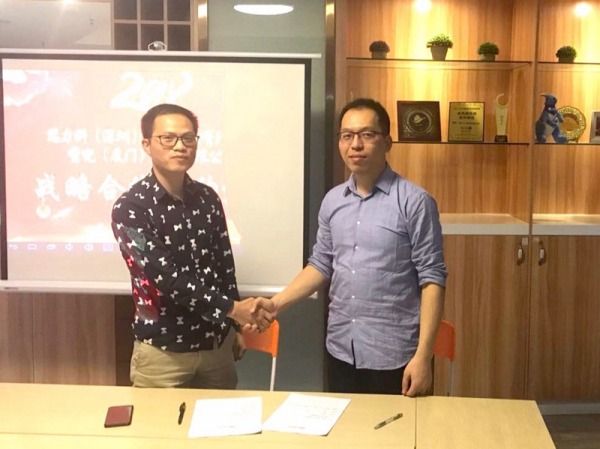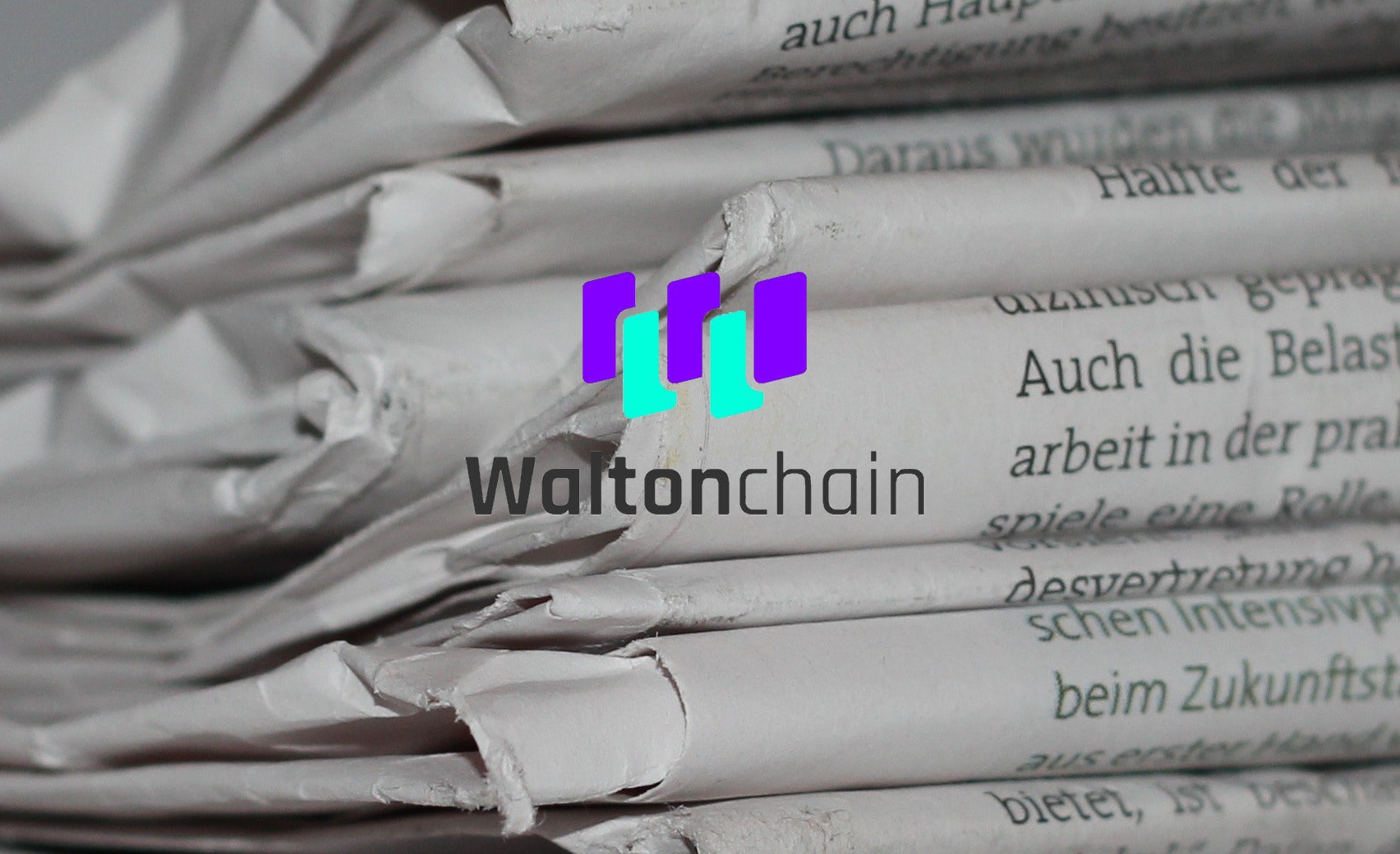Waltonchain, a China-based cryptocurrency project that has worked closely with the national government, has enjoyed a fruitful first quarter with several partnerships and a recent mainnet launch.
With a steadfast vision to build the “Value Internet of Things,” a term that the team uses to describe business-oriented IoT supported by RFID technology, there are several spaces that the project can tie itself into to expand its market.
We have previously tracked the project’s progress but, as is the case with so many projects, it can be difficult to keep up with the rate of developments. Here, we cover the most recent communications and updates from the team.
Since the launch of the mainnet on March 31, Waltonchain has been listed on the Lykke Exchange, established a mining reward program and, on April 13, announced that they have formalized an agreement with cross-border logistics platform Huodull.
We’ve rounded up the details of what has transpired over the last two weeks or so, and the extensive AMA held in the later half of March.
Waltonchain and Huodull Sign Agreement to Deploy Blockchain onto Logistics Platform

Waltonchain’s latest development is the signing of a cooperation agreement between its technical arm, Silicon Electronic Technology, and Huodull, a cross-border logistics platform.
Huodull already utilizes big data and cloud technology in its services, and provides free insurance to its customers. It has received over 10 million RMB in investment. Through its category logistics scheme, Huodull offers special delivery routes for oil paintings, scooters, pure batteries and more.
Waltonchain’s role in this partnership will be to support its “pocket insurance” strategy and, through its technology, eliminate the typical problems that a supply chain industry experiences. This includes traceability, counterfeit resistance and higher efficiency.
We are committed to promotion of wide application of blockchain technology in the logistics industry, transform the conventional IoT business model and finally build a new blockchain + logistics ecosystem.$WTC #waltonchain #IoT #blockchain #logisticshttps://t.co/N6XkAniDPt
— Waltonchain (@Waltonchain) April 13, 2018
This new collaboration is the latest in a long series of partnerships that Waltonchain has secured in 2018. Q1 was particularly eventful for the project in this regard – it now has fingers in the clothing, smart city and logistics industries. It is also working closely with governmental entities. As noted in the AMA (detailed below), Waltonchain’s work could be tailored to suit a variety of situations and spaces, with the cost-effective nature of its implementation making it particularly appealing for stakeholders.
It is the external validation that Waltonchain receives with such collaborations that is the most significant benefit. This could pay off very well for the project as it could give them a strong foothold for expansion into the global market, as the technology gets proven in actual use in each of these industries. As tangible benefits of the project begin to be recognized, it makes it easier for Waltonchain to obtain further partnerships.
Highlights of the WTC AMA
In the wide-ranging AMA, Waltonchain addressed several questions relating to RFID, their development progress, consensus and rewards, child chains, and business strategies.
The AMA provides a lot of interesting nuggets of information, such as the cost of each RFID tag chip (under 5 cents), the utility of chips in the future, and more technical points regarding mining and staking. You can read the full set of questions and answers on Waltonchain’s blog.
In the first round of answers, the Waltonchain team tackled questions relating to hardware, the blockchain, and patents.
Those who have been following the project will be aware that it has significant implications for retail industries and indeed has already been vouched for by some Chinese retail entities. Waltonchain’s blockchain and RFID solution has resulted in the realization of “smart stores,” which has drawn comparison to Amazon Go—the store with no cashiers and counters.
Being similar in nature, and therefore a rival, one Redditor wondered how Waltonchain’s smart stores could compete against the giant that is Amazon, with its infinite resources and use of other technologies. The team replied that RFID results in lower costs, batch processing, and a wider identification range compared to the camera and AI technologies that Amazon uses.
The sensor modules play a decisive role in the function of RFID chips, i.e., the purpose for which they can be used. When asked about what sensors are available and what is planned, the team replied that their current focus is on Infrared Receiver chips and RFID chips. They are considering developing Particulate Matter (PM) 2.5 and gesture recognition sensors. The former could find a huge market in industrial sectors, given the inexpensive nature of this particular development, and the latter has wide-ranging possibilities.
Waltonchain can also test and deploy their technologies through their many partnerships, in which smart cities and environmental supervision is a common theme. They also confirmed in the AMA that they are working with NIDS, who specialize in pollution sensors, to develop solutions for smart cities, so the new sensor modules have deployment opportunities.
Referring to the CryptoKitties incident, one user asked about the consequences if a similar load was placed on the Waltonchain network, to which they replied:
Any blockchain network will be congested if its users are willing to spend high fees on high-frequency and large-scale transactions. However, after the Waltonchain starts operation as a public chain and independently developed user applications (such as CryptoKitties) and the applications that Waltonchain will launch itself (for instance, the clothing industry one) will run on the Waltonchain, we can ensure that the applications launched by Waltonchain itself will not have any congestion problems.
As for performance, when asked about the highest transactions per second on a single chain, and across all combination functional chains, they stated that “the transaction rate is similar to that of Ethereum. During experiments with data management and data query verification on child chains, the speed reached one hundred transactions per second. In the future, as the size of the network and the number of nodes change, we will continue to optimize the technology.”
7 of 13 patents have been filed. Responding to the thought of whether the project would be set back should the remaining 6 patents be in trouble, Waltonchain replied:
There will be no risks. Our patent specialists are analyzing and researching patents to establish the complete patent layout in the technical areas relevant to Waltonchain. Protection of intellectual property rights is of utmost importance to us.
However, the success of the platform all comes down to the adoption of their technology in business spaces. One user asked about how long it might be before a Waltonchain partner used a child chain in a production environment as part of their business operations. Sadly, there was no definitive answer, with the team saying that they are evaluating potential partners and child chains, and will inform the public when the time is right.
Replying to concerns that server farms would monopolize mining, the team said that they would “welcome more computing power to join. The Waltonchain parent chain utilizes the PoW + PoS consensus. Therefore, the method to adjust mining difficulty relies not only on computing power, but also on equity and holding time.”
The team also indicated that they wish to start GPU mining as soon as possible but that has upset some community members (more on this later).
Other points of note:
- Companies can build a hierarchical set of child chains
- Child chains may be public or private, depending on the desires of the data rights holders
- Nodes will be gradually networked and software added incrementally
- Waltonchain believes that smart cities will increase the transaction value of its token
The Waltonchain Progressive Mining Reward Program
To incentivize mining, Waltonchain has established a mining program that has been budgeted with a total reward pool of 30 million WTC. This pool is divided into three smaller pools, according to the consensus mechanism. 25 million has been allocated for the PoW and Master Node (MN) pool, 4 million for the Guardian Master Node (GMN) pool and 1 million for PoS. More details on the mining program can be found here.
All this said, the reception of the program has not been unanimously positive. Some investors have raised concerns that private mining pools diminish the value of the GMN and MN, encourages greed, and raises the possibility of a 51% network attack. For further information on this interesting discussion, refer to this Reddit thread.
Waltonchain Token (WTC) Gets Listed on the Lykke Exchange
The Lykke Exchange is a Swiss company that distinguishes itself with its Colored Coin protocol and has its own token, the Lykke coin. The exchange was launched in Q2 2016 and has slowly added support for various coins. Waltonchain is the latest and joins Bitcoin, Ethereum, Litecoin, EOS, and some other notable coins. The trading of the token comes with no trading fees.
Final Thoughts
These developments highlight how Waltonchain is keeping the momentum going since the release of its mainnet late last month. In particular, their growing number of partnerships signal strong practical realizations of the project and for the kind of niche they are working in, this is of vital importance. If it does indeed find validation, we could see Waltonchain cement itself as a major project in one of blockchain’s most suited niches, the supply chain industry.

